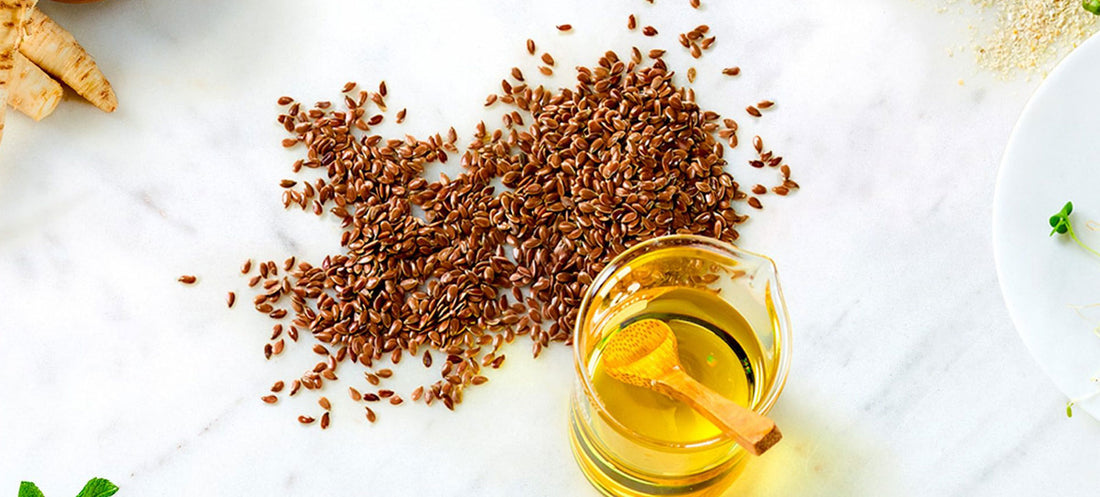
Healthy Grains
Share
We often get asked why we use grains in our dog and cat recipes. To put it simply, grains are healthy and offer many advantages. Here’s what you need to know about healthy grains.
Kibble Formulation
To make a dry kibble pet food, a source of carbohydrates must be used in the formulation in order for the product to hold together. Just because a pet food is grain-free, doesn’t mean it has fewer carbohydrates. It simply means that ingredients other than grains are providing carbohydrates to the formulation. Grain-free kibble has just as much (if not more) carbohydrates than grain-inclusive diets. Carbohydrates can be provided from many types of ingredients, including:
- Grains such as rice, barley and oats;
- Legumes and pulses such as chickpeas, lentils, and peas;
- Starchy vegetables such as potatoes and sweet potatoes;
- Pseudograins like millet, amaranth, and buckwheat.
Grain-Free vs. Grain-Inclusive Diets
Many grain-free formulas will use legumes and/or pulses as their main source of carbohydrates. By doing so, the amount of plant protein in the pet’s diet is considerably higher since legumes and pulses provide significant amounts of protein when compared to grains. Plant proteins can be used to complement proteins of animal origin when used as secondary ingredients. When legumes and/or pulses are used as main ingredients, it results in a pet food that contains a high proportion of protein coming from plant protein. The problem with that is plant proteins don’t have an ideal balance of amino acids (the building blocks of proteins). In other words, they often are limited in one or more essential amino acids. If the overall grain-free, legume-inclusive diet is not expertly formulated with the addition of crucial amino acids like methionine (an amino acid that is low in legumes) and taurine, it may result in amino acid deficiencies that can lead to health issues.
Grains, on the other hand, are not a significant source of protein. By using grains as a source of carbohydrates, a formula will contain less plant protein and more of the protein will be of animal origin, providing amino acids in the right amount and balance.
The Benefits of Healthy Grains for Your Pet
There are many advantages to choosing healthy grains. Being minimally processed ingredients, whole grains are good sources of vitamins, dietary fiber, resistant starch, macrominerals, and numerous phytochemicals1. They also offer a source of readily available energy in the form of carbohydrates. Even though cats and dogs are carnivores, there is a body of scientific evidence proving they can effectively metabolize carbohydrates and they are not detrimental to the health of the animal2. There is, however, a carbohydrate threshold in cats and we formulate all of our diets to ensure we stay well below that threshold.
The Benefits of Dietary Fiber for Your Pet
Healthy whole grains are a good source of dietary fiber. Dietary fiber plays an important role in modulating bowel movement, influencing immune function and gut microbiota profile, diluting caloric density, contributing to weight loss, and indirectly, ameliorating the incidence of obesity and diabetes mellitus in the pet population3. Oats and barley, two whole grains used in many Vetdiet® formulas, are good sources of β-glucan. This water-soluble fiber is known for its plasma lipid- and glycemic-lowering effects in humans and animal models. As such, oats and barley may be beneficial in the control or prevention of obesity, diabetes mellitus and dyslipidemia.
It is important to note that whole grains like oats and barley have glycemic lowering effects. As such, they deliver energy in a steadier way, keeping your pet full longer for sustained energy throughout the day. More processed sources of carbohydrates may give your pet a quick boost in energy, but that will usually be followed by a “crash” in energy, lethargy, and a pet that is hungry way before meal time.
The Benefits of Healthy Grains for Our Planet
Formulating foods with excess proteins is simply an irresponsible practice. It results in a more expensive food for the pet parent as proteins tend to come in more expensive ingredients, but also results in a less sustainable food both in terms of its environmental impact and also by competing with the human food market. All that to confer no added benefit to the pet. At Vetdiet®, we choose to feed pets responsibly by providing diets with digestible proteins to deliver the right amount and balance of amino acids based on the true requirements of cats and dogs. We use healthy grains to provide readily-available energy, and in doing so, are limiting the carbon footprint of each Vetdiet® bag by not over-using proteins.
- Beloshapka, A.N.; Buff, P.R.; Fahey, G.C.; Swanson, K.S. Compositional Analysis of Whole Grains, Processed Grains, Grain Co-Products, and Other Carbohydrate Sources with Applicability to Pet Animal Nutrition. Foods 2016, 5, 23.
- L. D. de-Oliveira A. C. Carciofi M. C. C. Oliveira R. S. VasconcellosR. S. Bazolli G. T. Pereira F. Prada. Effects of Six Carbohydrate Sources on Diet Digestibility and Postprandial Glucose and Insulin Responses in Cats. Journal of Animal Science 2008, 86, 9. P.2237-2246.
- De Godoy, M.R.C.; Kerr, K.R.; Fahey, Jr., G.C. Alternative Dietary Fiber Sources in Companion Animal Nutrition. Nutrients 2013, 5, 3099-3117.